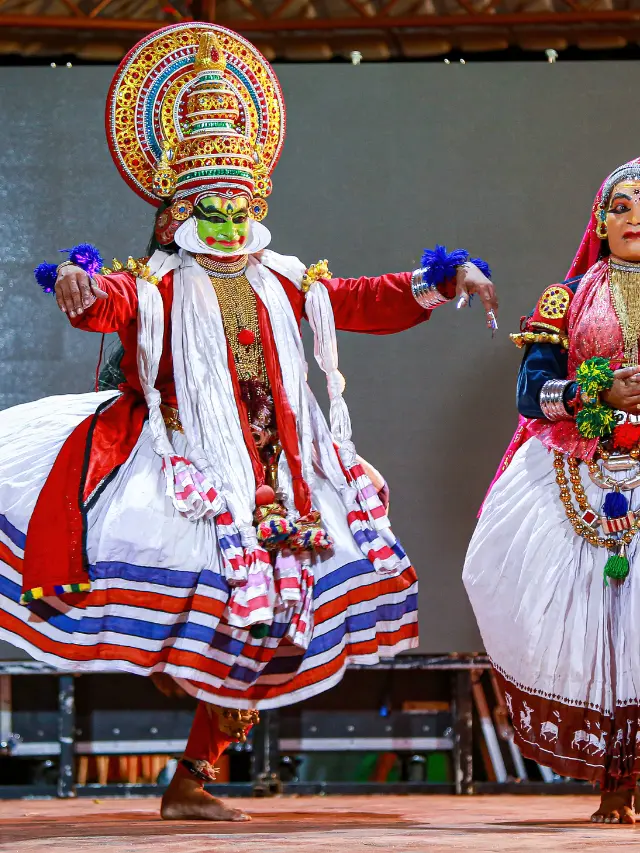The Kannada language is also known as Kannarese and it has been one of the most popular Dravidian languages of India. It traces back to the early Christian era and is as old as Tamil. Predominantly, the Kannada language is spoken in the state of Karnataka in India.
A significant number of Kannadigas can be found in the other states with around 4,37,06,512 Kannada speaking people which is about 3.61% of the total population as per the 2011 census. Also, there are over 12.9 million non-native speakers in Karnataka adding up to an overall of 56.9 million Kannada speakers.
Certain people who live in other parts of the world such as the USA, UAE, UK, Singapore, Australia, etc speak this language. It ranks in the 27th place among the most spoken languages in the world. Moreover, it is the administrative and official language of the Indian state, Karnataka, and the Republic of India.
Script of Kannada
The inscriptional records in Kannada date back to the 6th century. It is closely related to Telugu and Tamil languages as it originated from the southern Bramhi lipi of the Ashoka period. Then as time went by, a mixture of Telugu-Kannada scripts emerged even before the 7th century. In the middle of the 7th century, a few more Telugu-Kannada scripts were developed.
It was modernized during the 13th century when other languages like the Kodava, Konkani, and Tulu use the Kannada script. It is stated that the early development of Kannada was independent of the Sanskrit influence. The writing system includes the principles that govern the politics with syllabic and phonemic writing.
Around the 11th century, the literature of the Kannada language experienced a setback from Tamil kings and had some words acquired from the Tamil language with variations of meters and structural variety.
Example for similar words in Kannada and Tamil
| English | Kannada | Tamil |
|---|---|---|
| Fish | Minu | Meen |
| Wrong | Thappaada | Thappu |
| House | Mane | Manai |
| Stop | Nillisi | Nil |
| Moon | Chandra | Chandran |
Kannada Alphabets
Vowels
| ಅ | ಆ | ಇ | ಈ | ಉ | ಊ | ಋ | ೠ | ಎ | ಏ | ಐ | ಒ | ಓ | ಔ | ಅಂ | ಅಃ |
| a | aa | i | ee | (v)u | oo | ru | roo | e | yay | ai | o | O | au | um | aha |
| ultra | all | in | eat | hook | hoop | ~hurt | – | end | ate | idle | one | over | out | hum | ah ha |
Consonants
| ಕ | ಖ | ಗ | ಘ | ಙ |
| ka car | kha Khan | ga gun | gha guffaw | ~gna |
| ಚ | ಛ | ಜ | ಝ | ಞ |
| cha church | Cha ~change | ja jar | jha hedgehog | ~jna |
| ಟ | ಠ | ಡ | ಢ | ಣ |
| ta tom | tta anthill | da dumb | dda duh | – ~pond |
| ತ | ಥ | ದ | ಧ | ನ |
| tha third | tha thump | dha the | dha Buddha | na nut |
| ಪ | ಫ | ಬ | ಭ | ಮ |
| pa punt | pha up-hill | ba bar | bha clubhouse | ma mars |
| ಯ | ರ | ಲ | ವ | ಶ | ಷ | ಸ | ಹ | ಳ | ಕ್ಷ |
| ya yak | ra run | la lump | va van | sha shamu | ssha hush | sa sum | ha hut | La world | ksha rickshaw |
Kannada Consonantal Vowels

Evolution and Existence of Kannada
Kannada was the classical language of India where it was also recognized as the court language of several powerful empires in ancient India. Bangalore, Mysore, and Hampi are the birthplace of Kannada besides the southwestern state of Karnataka.
Read also: Oldest languages of India
Some people in Maharashtra, Andhra Pradesh, Goa, and Tamil Nādu also speak this language to a huge extent. It has bagged 8 Jnanpith awards deeming it the highest among the Dravidian languages.
The proof of the existence of Kannada is scattered all around India and certain parts abroad. Several words in the Ashokan inscription are found in the Kannada language. Other Kannada inscriptions are found in Karnataka, Tamil Nadu, Telangana, Maharashtra, and Madhya Pradesh.
Kannada Numerals
| Numeral | Number Name (Kannada) | Numbers |
| ೦ | sonne (ಸೊನ್ನೆ) | 0 |
| ೧ | ondu (ಒಂದು) | 1 |
| ೨ | eraḍu (ಎರಡು) | 2 |
| ೩ | mūru (ಮೂರು) | 3 |
| ೪ | nālku (ನಾಲ್ಕು) | 4 |
| ೫ | aidu (ಐದು) | 5 |
| ೬ | āru (ಆರು) | 6 |
| ೭ | ēḷu (ಏಳು) | 7 |
| ೮ | enṭu (ಎಂಟು) | 8 |
| ೯ | oṃbattu (ಒಂಬತ್ತು) | 9 |
| ೧೦ | hattu (ಹತ್ತು) | 10 |
To conclude, the birth along with the development of the Kannada language is truly fascinating. Emerging from the ancient periods, the works in Kannada are strong making the language a wonder.
Read also Malayalam Language.
